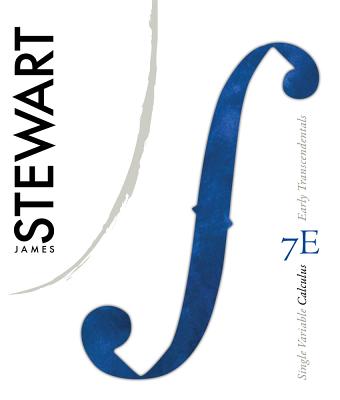Calculus III - MATH 2210
Summer 2013
Temporary Announcements:
|
Syllabus: PDF
Class code for WebAssgin : uwyo 6655 7622
Past Exams: Spring 2013: ZIP
Homework 1: PDF
Homework 2: PDF
Homework 3: PDF
Homework 4: PDF
Maple Worksheets:
The files that I've uploaded don't work, so here is the link to a dropbox folder with all the worksheets on it and will be updated regularly: +
The ones that have section numbers in front of them are from a website that I forgot the link to.
The rest are the ones that I've prepared and used in class.
 If
you feel confident with the topics of calculus I and II and you want
something that you can do to to get better understanding of the topics
and to get
deeper into concepts as well as applications, Shahriar Shahriari's book, Approximately Calculus, provides an excelent such perspective.
If
you feel confident with the topics of calculus I and II and you want
something that you can do to to get better understanding of the topics
and to get
deeper into concepts as well as applications, Shahriar Shahriari's book, Approximately Calculus, provides an excelent such perspective. From the back cover of the book: (also can be found at google books)
| Is there always a prime number
between n and 2n? Where, approximately, is the millionth prime? And
just what does calculus have to do with answering either of these
questions? It turns out that calculus has a lot to do with both
questions, as this book can show you. The theme of the book is
approximations. Calculus is a powerful tool because it allows us to
approximate complicated functions with simpler ones. Indeed, replacing
a function locally with a linear--or higher order--approximation is at
the heart of calculus. The real star of the book, though, is the task
of approximating the number of primes up to a number x. This leads to
the famous Prime Number Theorem--and to the answers to the two
questions about primes. While emphasizing the role of approximations in
calculus, most major topics are addressed, such as derivatives,
integrals, the Fundamental Theorem of Calculus, sequences, series, and
so on. However, our particular point of view also leads us to many
unusual topics: curvature, Pade approximations, public key
cryptography, and an analysis of the logistic equation, to name a few.
The reader takes an active role in developing the material by solving
problems. Most topics are broken down into a series of manageable
problems, which guide you to an understanding of the important ideas.
There is also ample exposition to fill in background material and to
get you thinking appropriately about the concepts. Approximately
Calculus is intended for the reader who has already had an introduction
to calculus, but wants to engage the concepts and ideas at a deeper
level. It is suitable as a text for an honors or alternative second
semester calculus course. |
Feeling strong in calculus? Try some of these problems: +
Some useful links:
- Calculus III Lectures by Edward Frenkel: +
- A forum to ask and answer questions: Art of problem solving
- A series of videos by legendary Gilbert Strang on the highlights of calculus: +
- Short, fun, and informative videos on different basic topics in math like what
are numbers, how to add fractions to watch at your spare times: +
- Still struggling with what limits and derivatives are? Here is a list of short friendly videos which
teach you the topics, give many examples and also talk about some
applications. Also explore
the website for other topics: +






